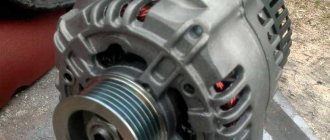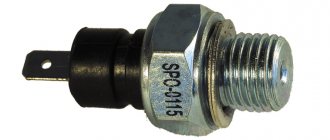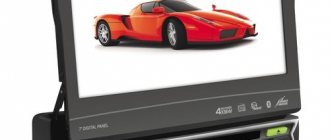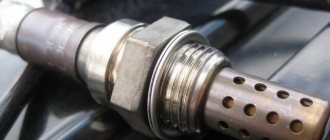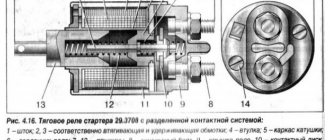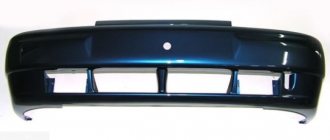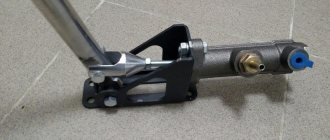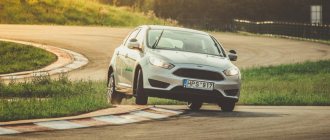Any modern car is equipped with a standard on-board computer - a device that allows you to obtain basic information about the functioning of all components and mechanisms of the vehicle. In addition, the on-board computer allows you to control additional car options, such as a multimedia center, air conditioning or heated windows and seats.
Some car models (usually basic versions of cars), or outdated cars, do not have an on-board computer. The article will discuss how to independently install this high-tech multifunctional device on a vehicle.
On-board computers differ in purpose, which directly affects the characteristics of these devices. When choosing a BC, it is necessary to take into account the purposes of use, and only after choosing the “area” of application of the device, you can proceed to studying the characteristics of the models.
For taxi parks and taxi services, on this website you can download a program for printing and recording taxi waybills, as well as all the necessary road traffic safety magazines.
Characteristics
Bookmakers are divided into universal and narrowly focused.
Devices of the first type determine geographic coordinates, can play multimedia files and have the ability to connect to the Internet. As for narrowly targeted on-board computers, their scope of application is vehicle diagnostics, control of electronic car systems, as well as plotting the vehicle’s route. As for the characteristics, they completely depend on the type of device. Thus, universal BCs are of little use for diagnosing a vehicle, while narrowly targeted ones, for example, intended for plotting a car’s route, are not suitable for downloading and playing multimedia content.
Important! Depending on the type of on-board computer, certain characteristics of the device play an important role. For example, screen resolution and diagonal are important for multimedia files, or for viewing maps when planning a route. Well, the presence of a huge number of options for controlling the car’s electronic systems is suitable for narrowly targeted on-board computers.
Connection in a car service
Service station technicians won’t charge a lot of money for installing equipment and will do everything quickly.
The Uremont.com aggregator provides car owners with an interactive map indicating partner service stations, customer reviews about them, and feature articles. If you need professional advice, write your question in the chat - the answer will come quickly. A convenient way to submit a request is to fill out the online application form. In this case, the response comes within 15 minutes.
If you decide to replace the BC or find a code indicating a significant problem on the display, contact a technical center.
Features of the models
As mentioned earlier, on-board computer models vary depending on their application. So, narrowly focused ones are divided into:
- Trip computers
On-board computers of this type allow you to plot the route of the vehicle. Features of the device include the ability to automatically determine coordinates and full navigator functionality. Additional indicators include information about travel speed, fuel consumption and weather “overboard”.
- Control computers
Designed to control electronic systems. They allow you to manually regulate the operation, starting from the fuel dampers of the power unit and ending with the climate control system.
- Diagnostic computers
The device is also called a service computer. It is intended for troubleshooting the vehicle. It is important to note that an on-board diagnostic computer is quite rare. The functions of this device can be equipped with universal on-board computers. As for the functions of the service BC, these include: Monitoring the status of the vehicle's electrical supply devices. Allows you to identify problems such as short circuits, overvoltage, malfunction of car sensors and lighting devices, and electrical leaks. Monitoring wear of brake pads and discs. Oil and coolant level monitoring. Diagnostics of the performance of all vehicle systems. The ability to save received data has been implemented.
Important! In addition to the above, the device is capable of storing information about the occurrence of certain problems. Afterwards, based on the information, a special report is generated, which provides information about the performance of the vehicle systems, and the report also provides recommendations on systems that require repair.
Nuances of choosing an on-board computer
When choosing a bookmaker, a number of factors are taken into account:
- Brand of control unit.
Depending on the CU model, you need to select the appropriate on-board computer (BC, combines work with the CU).
- Type of power unit.
Depending on which engine is installed in the car, the choice of BC depends. Thus, carburetor engines practically do not have suitable BCs; for a diesel engine, you can already find some BCs, and for injection versions of engines, the most extensive selection of on-board computers is provided. It is worth noting that manufacturers of cars with an injection engine prepare a place for installing and connecting the BC, although the device itself is not included in the kit.
- Scope of application of the on-board computer.
Even before purchasing, you need to decide for what purposes the device will be used. If the device shows the temperature “overboard”, fuel consumption and economy indicators, and mileage, then you can purchase a cheap model. If, however, you need a serious diagnostic electronic unit, then you will have to spend money on purchasing a more expensive model.
- BC operating temperature.
When purchasing, it is important to remember that the on-board computer will be forced to function in both cold and hot weather. Therefore, it is important to choose a device that is resistant to prolonged exposure to extremely high and low temperatures.
Kinds
Before buying and connecting a new multifunctional device for reading and displaying important vehicle parameters, you should decide on the type of on-board computer that suits you.
There are 2 types of BC:
- multisystem;
- model.
Multi-system or universal are capable of supporting a huge number of cars, regardless of model, brand and year of manufacture. Therefore, they can be used to connect to simple injection and carburetor engines, as well as to more modern, complex power units, including turbocharged engines.
The devices differ from each other even in appearance. Universal devices are installed where the motorist himself thinks is correct. Versatility has its advantages, but also provides some disadvantages. They are usually used for those cars that do not have an on-board computer, that is, there is no regular place for it.
Model on-board computers are limited in application, since they can be installed on specific vehicles. The optimal place to install such equipment is the dashboard. By installing the BC in its regular place, it will not stand out in the car’s interior and will be able to competently and accurately take its rightful place.
It is recommended to consult in advance regarding which on-board computers are suitable for your specific vehicle. Not all universal models can boast of compatibility with literally all cars. Every place has its own restrictions and lists of models to which they can be connected. If your car is among them, then feel free to buy a trip computer.
Self-installation of BC
After purchasing a suitable device, you need to connect the purchased equipment. For the bookmaker to function, you will need:
- DC voltage source +12V (usually a car battery performs this function).
- The power supply supplied to the BC at the moment the key is turned in the ignition switch. Thanks to this, the BC will turn on simultaneously with the start of the vehicle engine.
- Voltage when the side lights are turned on. Thanks to it, the BC will automatically adjust the screen brightness and reduce it when the dimensions are turned on. This will also reduce battery consumption.
- Weight.
- Signal from the fuel level sensor. Many modern bookmakers cannot do without it. This is due to the fact that the computer needs sensor data to automatically calculate the level of fuel consumption.
- Diagnostic lines (K-line). The channel is responsible for providing information about all car systems.
On some older models, a diagnostic block with signals is not installed. In order to obtain a voltage of +12 Volts, you will need to supply power to the BC from the ignition switch, and connect the side lights to the cigarette lighter. The mass can be taken from the body or from the cigarette lighter.
IMPORTANT! Before carrying out work on connecting the battery, you need to turn off the power to the battery.
To connect the BC to the fuel sensor, you need to carefully study the electrical circuit of the vehicle. Thanks to this, you can find the right cable to connect. Afterwards, all that remains is to decide on the connection location and connect the wire from the BC there. K-line is usually located on the diagnostic block. “Euro 2” connectors are equipped with them in socket “M”, and in “Euro 3”, in socket “7”.
As a rule, a temperature sensor is included in the standard configuration of the BC. It must be installed outside the vehicle. The most common location for attaching the device is the left side of the bumper. This way, the device will not be exposed to any unnecessary heat. Well, the wire from the sensor is routed into the holes between the engine compartment of the vehicle and the passenger compartment.
As for the installation time of an on-board computer on a car, it takes no more than 1–2 hours, but at the same time, it allows you to significantly save money (for example, the average cost of installing an on-board computer is 50 US dollars).
Our recommendations
When installing an on-board computer, you should use the following rules:
- Strictly follow the instructions and diagram. If the location of the connection to the on-board circuit is not precisely determined, it is better not to even try to make the connection, as you can damage the vehicle unit;
- It is not advisable to install the on-board computer within view of the traffic situation. It is better to find free space on the center console or near the rearview mirror.
- The vehicle's OBD diagnostic connector is often located in the driver's left foot area. Connecting the on-board computer cable to it will interfere with vehicle control. You should consider removing the OBD connector and moving it to another location.
- When connecting additional electrical wiring to various systems and components of the car, you must not “grab” the wires with clamps to the body parts. It is better to run them along the existing harnesses.
- When connecting electrical wiring to sensors, use the method of twisting and soldering with further insulation with heat-shrinkable tubes and heat-resistant electrical tape.
Installing an on-board computer is a complex and responsible job, even for an experienced auto electrician. When performing this work, engage a highly qualified specialist, preferably trained for the specific equipment being installed.
How to reflash the on-board computer?
Reflashing the on-board computer software will allow you to obtain more accurate readings from the sensors, as well as correct a number of errors associated with the operation of the preinstalled system. Figuratively speaking, flashing a BC is no more difficult than reinstalling the Windows operating system. As for specific BC models, each has its own firmware version, but the algorithm for replacing the software with a more advanced one is individual:
- A flashing program (for example, BootLoader.exe) is installed on the PC or laptop.
- Next, you should connect the bookmaker to your personal computer.
- The next step is to connect the power.
- In the flashing utility, you need to set the value of the port to which the COM1 data cable is connected.
- If the previous step is completed correctly, the “upload file” button will appear, and after its activation, a window will open in which you need to select a firmware file in the “hex” format.
- Next, all that remains is to press the “Start ISP” button, and use the on/off key to restart the on-board computer. A loading indicator will be available on the PC display.
- After the download of the updated software is completed, the message “download complete” will be displayed on the screen, and the system will also prompt you to start the controller. After confirming the operation, it is necessary to check the functioning of the new BC firmware.
ERRORS
On the on-board computer you can read all the errors that occur in the ECM. Deciphering the VAZ 2114 error code follows certain codes. If there are no errors, the message “No errors” lights up on the display. The list of errors is large, so we will list only the most common error codes for the VAZ 2114:
- 0134 – no oxygen sensor activity;
- 0116 – coolant temperature sensor error;
- 0172 – enriched fuel mixture;
- 0300 - presence of misfires;
- 0340 – phase sensor is faulty;
- 0505 – failures in the XX regulator.
Errors on the VAZ 2114 on-board computer are reset according to the instructions for each specific model by pressing a button combination, but a general reset can be done by temporarily disconnecting one of the battery terminals.
Nuances of setting up a bookmaker
After connecting the bookmaker, it needs to be configured. To set up a bookmaker, you need to perform the following series of actions:
- Turn on the vehicle ignition and start the engine.
- Activate settings mode.
- Select the type of electronic unit.
- Select fuel consumption mode.
- Select the indicators that will be displayed on the device screen and adjust the backlight brightness.
- The final, important stage of setup will be determining the conditions for turning on the fan to cool the motor. To set the condition for turning on the “cooler”, you need to specify the engine temperature at which the motor requires cooling.

